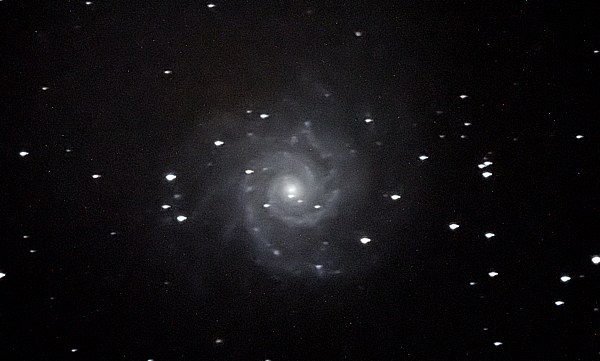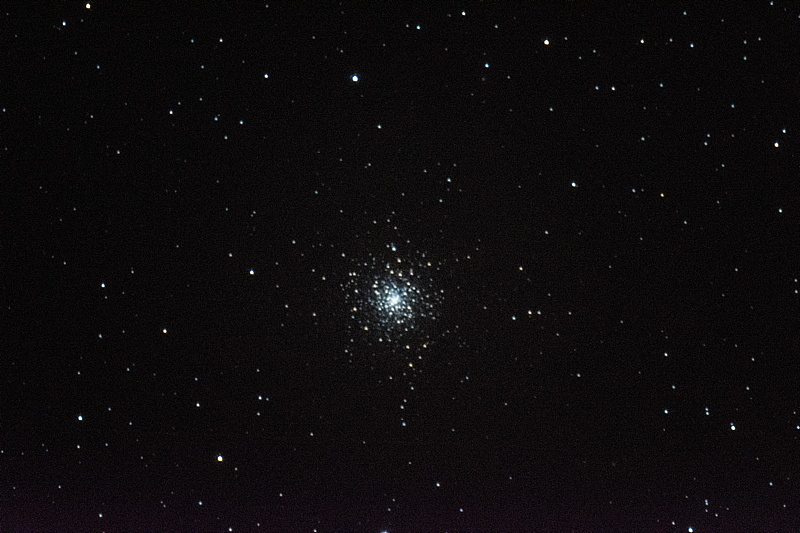Imaging: M74 & M77 Galaxies, M79 Globular Cluster
Posted: 27 January 2017
Opening Cassiopeia Observatory on Thursday, 26 January 2017, was delayed as I attended a "planning open house" for a community park in Oracle. There were several designs presented by students from the UofA. One was "solar system" themed with a planets playground and sky observing area. Several designs highlighted protecting our dark skies here in Oracle. Obviously, the dark skies concept started by the Oracle Dark Skies Committee is expanding.
|
Open: Thursday, 26 January 2017, 1938 MST Temperature: 48°F |
Session: 1063 Conditions: Clear |
Equipment Used:
12" f/8 LX600 w/StarLock
Wired AutoStar II handset
2" 24mm UWA eyepiece
Camera:
D7200 DSLR
1943 MST: LX600 ON, StarLock OFF, High Precision OFF.
Viewed M74 (galaxy), 102X. This would be my first Deep Sky Object (DSO) imaging target for the night. SYNCed the AutoStar on M74.
Then slewed to the star EPS AND, which would be the focus test star. Mounted the D7200 DSLR at prime focus of the 12" telescope. Focused on EPS AND using the AstroZap Bahtinov Mask and locked the primary mirror. Slewed back to M74.
2002 MST: StarLock ON. As it turned out, seeing was not very good this night. StarLock autoguiding rates were very high, with readings of 5-10 in Right Ascension (should be less than 2).
I imaged two Messier Catalog galaxies this night. Both of these images are slightly cropped from the full-frame versions:
M74 (5 minutes, ISO 6400, White Balance 4000K)

M77 (1 minute, ISO 6400, White Balance 4000K)

Trailing (guiding error) is evident in the 5 minute exposure of M74 and it totally ruined a 5 minute exposure of M77. I will re-image both galaxies on a future session.
The telescope was next slewed to Rigel and SYNCed. I tweaked the focus using the mask. Then slewed to M79 (globular cluster) for this full-frame, 30 seconds, ISO 3200, WB 4000K, image:

2037 MST: StarLock OFF. Ended imaging due to the poor seeing.
2047 MST: I checked M44 (Praesepe, Beehive Cluster, open cluster) with the D7200 DSLR and 18-140mm lens to determine field-of-view for astrophotography using the soon-to-arrive iOptron SkyTracker Pro. A focal length of 140mm should capture the cluster nicely.
Lastly, viewed M79 (globular cluster), 102X.
2052 MST: LX600 OFF.
|
Close: Thursday, 26 January 2017, 2100 MST Temperature: 39°F |
Session Length: 1h 22m Conditions: Mostly clear |
Comments are welcome using Email. Twitter users can use the button below to tweet this report to your followers. Thanks.
Cassiopeia Observatory Home Page
Copyright ©2017 Michael L. Weasner / mweasner@me.com
URL = http://www.weasner.com/co/Reports/2017/01/27/index.html
